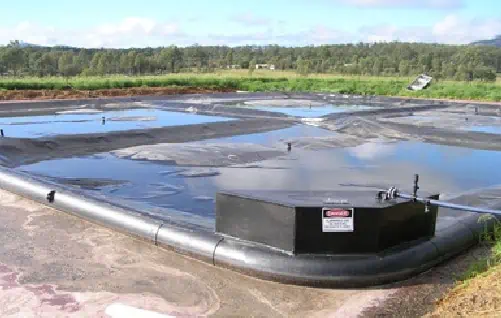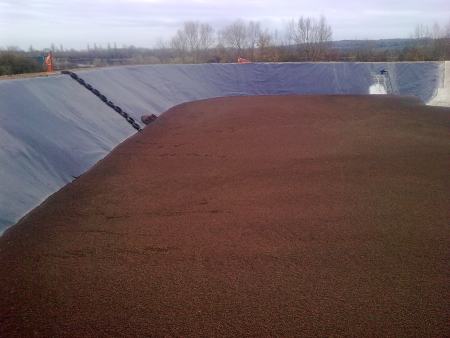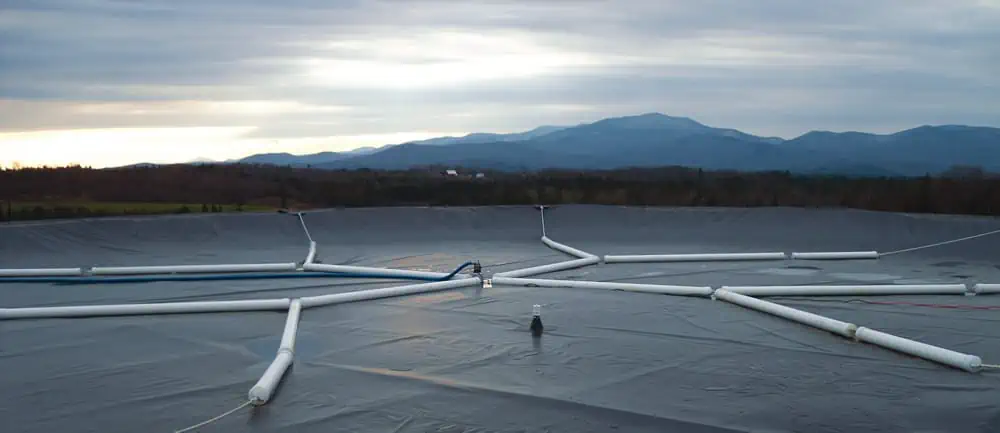Farms use covered lagoon digesters as an effective form of digester technology to create biogas. A digester is a closed container utilising anaerobic bacteria to break down organic material and produce methane. The collected methane gas is a high-quality fuel. Farms can use digesters to process animal manure, farm waste, and agricultural byproducts such as crop residues into biogas.
A covered lagoon digester works by creating an oxygen-deprived environment with a sealed or partially sealed cover on the digester. This helps protect the digesters from external elements while allowing gases to be released and collected. In this way, farm operators can maintain optimal conditions for anaerobic bacteria over time to maximise biogas production. Additionally, using a covered digester helps reduce odours associated with open lagoons and prevents contamination of nearby waters from runoff during heavy rain events.
Sometimes surface covers are secured around the pond by burying it in a perimeter trench. Or anchoring it to a concrete perimeter curb. Covered lagoon digesters use covers made from high dens high-density lines or polypropylene. Repairing covers is reasonably straightforward, with materials often having a 20-year lifespan.
A covered lagoon digester has some distinct advantages, mainly around the lower costs to build and operate. The downside is the seasonal variation in biogas production. Most systems rely on ambient temperature, producing less methane in the colder months. In the AgStar publication (available from the download section) production on a dairy farm. “ranged from a high of 142,947 ft3per day in April 2006 to 87,121 ft3 per day by the end of the study in January 2007.”
Covered Lagoon Digester Downloads
Can you increase the lagoon temperature? The answer is maybe… If relying solely on the waste heat from collected gas, there is often insufficient to raise the lagoon temperature. Another disadvantage is that lagoons or ponds are challenging to build in areas with a high ground water table.
For more information, please visit the Covered Lagoon Digesters download section. Here you can research various aspects of this type of digester.




Leave a Reply
You must be logged in to post a comment.